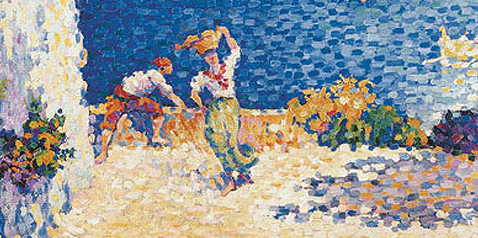
PAUL SIGNAC
In 1880 the young Paul Signac (Paris 1863–1935 Paris) was moved by a visit to an exhibition of works by Claude Monet to aim for a career as a painter; his early works – landscapes and still lifes inspired by Impressionism – point clearly to Monet and Alfred Sisley as role models.
In 1884 Signac met Georges Seurat; that same year, the two were among the founder members of the ‘Société des Artistes Indépendants’ (Society of Independent Artists). Seurat familiarized Signac with the Neo-impressionist movement, and within a short time Signac was devoting his energies entirely to the technique of Divisionism or Pointillism: paint was applied in dots or in short brushstrokes, the arrangement of the colours being determined by scientific insights into their complementary contrasts. The aim was to achieve the greatest possible luminosity.
Signac can be seen as the leading exponent of Neo-impressionism alongside Seurat. On account of his personal appeal and his ability to inspire others, he became head of the Neo-impressionist group soon after Seurat’s death in 1891. By giving both the Fauves and the Cubists access to the ‘Salon des Indépendants’, Signac was able to create a close association between the ‘Indépendants’ and the artists of the new avantgarde and thus ensure that Neo-impressionism would continue to be involved in the developments of modern art for some time to come.


